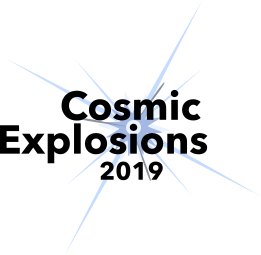Orateur
Description
It has recently been pointed out that ultra-long gamma-ray bursts (ULGRBs), with very atypical durations of more than 1000 seconds, could form a new class of GRBs (Levan+13). ULGRBs could have a different progenitor than standard GRBs and be produced by the core collapse of a low metallicity supergiant blue star (Gendre+13) or the birth of a magnetar following the collapse of a massive star (Greiner+14). However ULGRBs could also just represent the tail of the standard long GRB distribution (Virgili+13). In any case, it is clear that the duration of these bursts make them peculiar. To progress, the few ULGRBs detected so far by the Swift Burst Alert Telescope and some other instruments has to be increased. SVOM (Space-based multi-band astronomical Variable Objects Monitor, Wei, Cordier+16) is a French-Chinese mission dedicated to GRBs and transient events, currently under development and scheduled for launch after 2020. SVOM will help understanding ULGRBs, since its orbit and pointing strategy will permit to image the same portion of the sky continuously during nearly one day with the onboard coded-mask telescope ECLAIRs. Thanks to the image trigger foreseen onboard (Schanne+15), we expect to increase the sample of ULGRBs with SVOM. In this talk, I will present various methods developed to clean detector images from X-ray background and known X-ray source contributions in the onboard imaging process. Methods are based on detector model fitting (X-ray background model plus known X-ray source illuminations on the detector) and wavelet cleaning to remove large scales mainly containing the X-ray background. The cleaning performances of the methods will be presented. I will also focus on the capability of the image trigger to detect the currently available ULGRBs as well as a synthetic population of fainter and more distant ones, which help us to determine the ECLAIRs’ redshift horizon.

